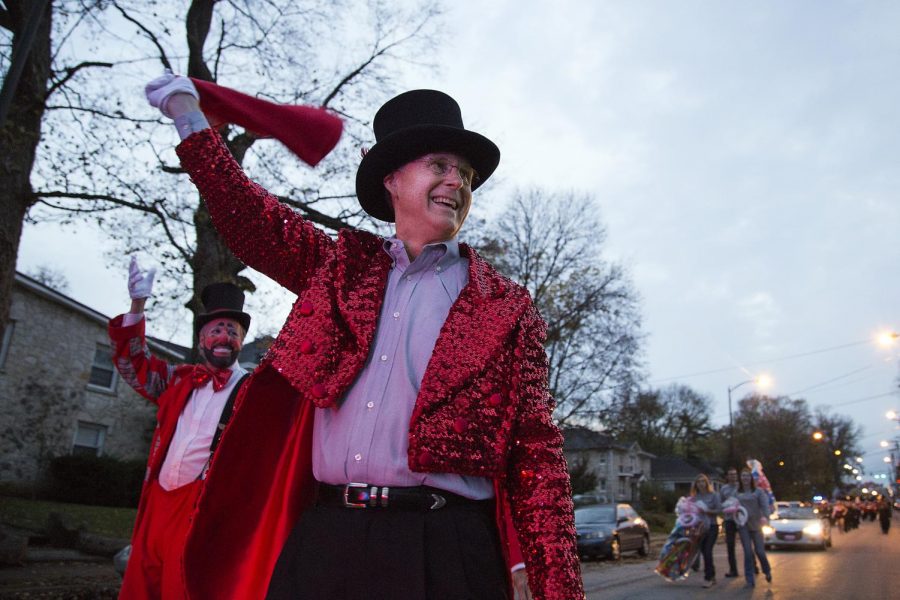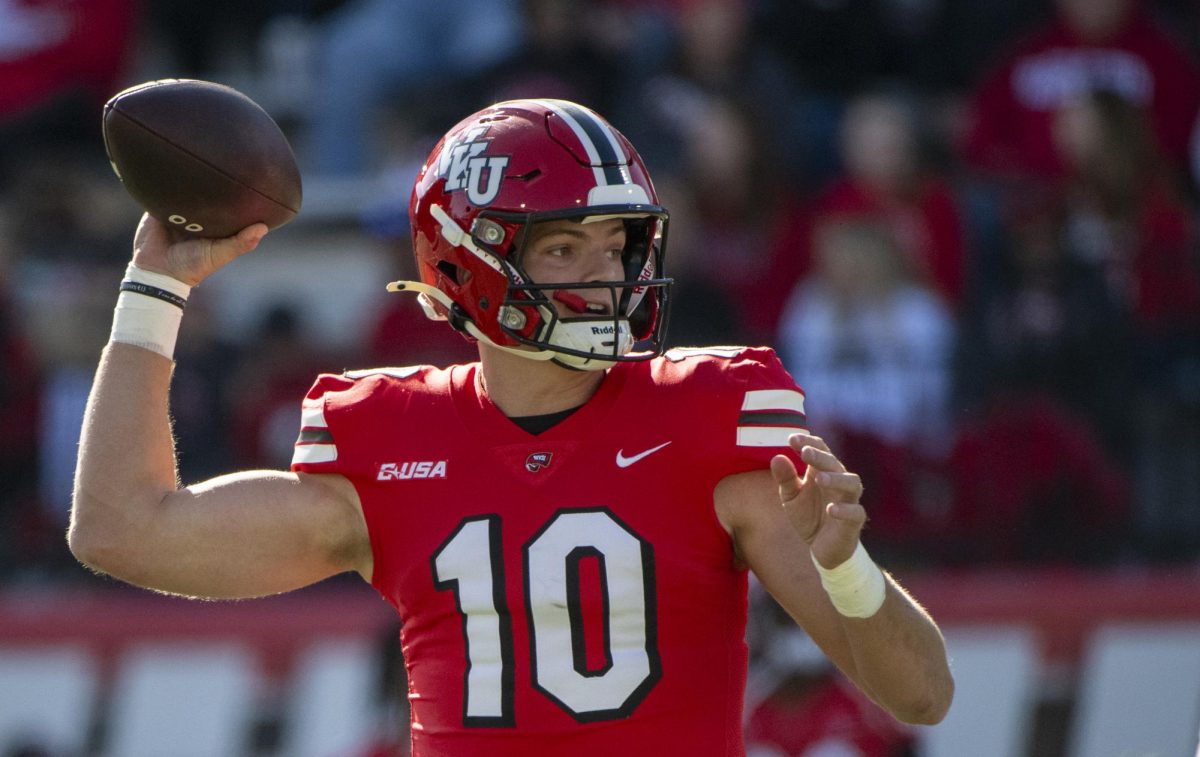The history of the Red Towel
October 3, 2017
During the 1940’s after World War II, towels began to disappear at WKU because athletes started taking them. Coach E.A. Diddle told Ed Stansbury, the head of the physical education department at the time, that something must be done so athletes wouldn’t run out of clean towels, and Stansbury requested the towels be dyed red.
Before the tradition of the Red Towel began, Diddle waved a white towel at basketball games. After the Red Towel emerged, he waved it, and it became a WKU icon. Diddle used a Red Towel to signal to players and wave at fans. He chewed it, twisted it, threw it in the air and cried on it during games.
Lee Robertson, special assistant to the vice president for development and alumni relations, came to WKU as a student after World War II in 1948. He said he played baseball for three years, and Diddle was his coach.
Robertson, 95, said he believes the Red Towel became an icon because of Diddle.
“He was such a colorful figure himself and so well respected and honored,” Robertson said.
Robertson also said Diddle knew how to treat athletes.
“He made me a better baseball player than I was, and he had the ability to get your head up, and he knew who to pat on the back and who to kick in the butt,” Robertson said.
When WKU played in the Final Four in 1971, many high schools and colleges contacted WKU to ask if they could use towels at games, and Robertson said the Red Towel is known nationwide for being associated with WKU. Ginny Hensley, director of alumni engagement and co-chair of homecoming, said the concept of the Red Towel athletics logo was developed during the same year.
Robertson said when thousands of students wave Red Towels in a stadium, “it’s impressive, and it attracts cameras.”
He said he believes the tradition is long-standing because WKU keeps it alive.
“It’s part of tradition, and it’s kept alive by the presidents and the coaches and the students, and they just want to be a part of waving the Red Towel,” he said.
In 2014, the first Homecoming Red Towels were created. People didn’t think they would be successful, but that year, the Student Alumni Ambassadors sold about 300 towels, said Allie Sharp, coordinator of student and young alumni engagement and adviser for the WKU Student Alumni Ambassadors.
This year, the Student Alumni Ambassadors ordered 750 homecoming Red Towels, and they have sold about half of them so far, Sharp said.
Sharp said the Student Alumni Ambassadors sell them online, at all homecoming events and at tailgating. They are $5 each, and they have a design inspired by this year’s homecoming theme, “There’s No Place Like Home.”
The money the Student Alumni Ambassadors raise from Homecoming Red Towel sales goes to support Student Alumni Ambassadors programming and sends some students to a national conference each year, Sharp said.
She said some alumni covet the Homecoming Red Towels, and she believes they appeal to people of all ages.
“I think it’s important because homecoming is such a large tradition on this campus, and I think that one of the biggest traditions we have at WKU is the Red Towel,” Sharp said. “So why not put the two things that are so well-known and people get so excited about together?”
Hensley said she believes the Red Towel is an essential WKU staple, and she said she believes it will continue to be a tradition.
“It’s just a tradition that has stuck, and it’s not a tradition that is likely going to ever change,” she said. “It’s not trendy. It spans all generations.”
She said she believes the Red Towel ties everyone at WKU together, and “having something that links us all is important.”
Robertson said he believes the Red Towel is a part of WKU’s history and its identity as a university.
“I know it’s part of me,” he said.
Reporter Olivia Mohr can be reached at 270-745-2655 and [email protected].












